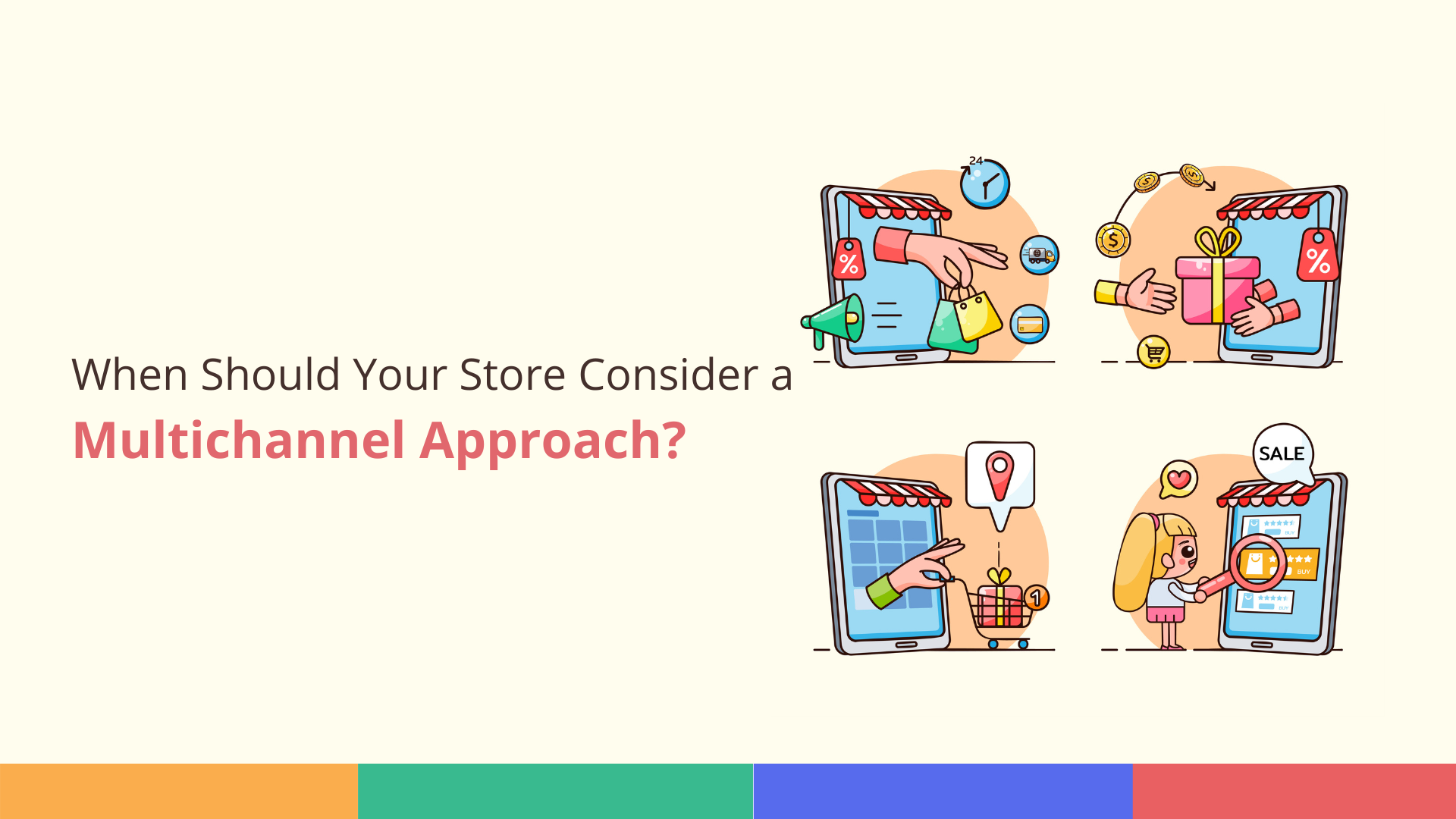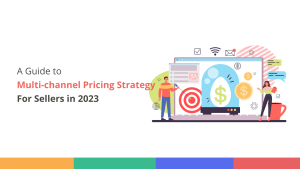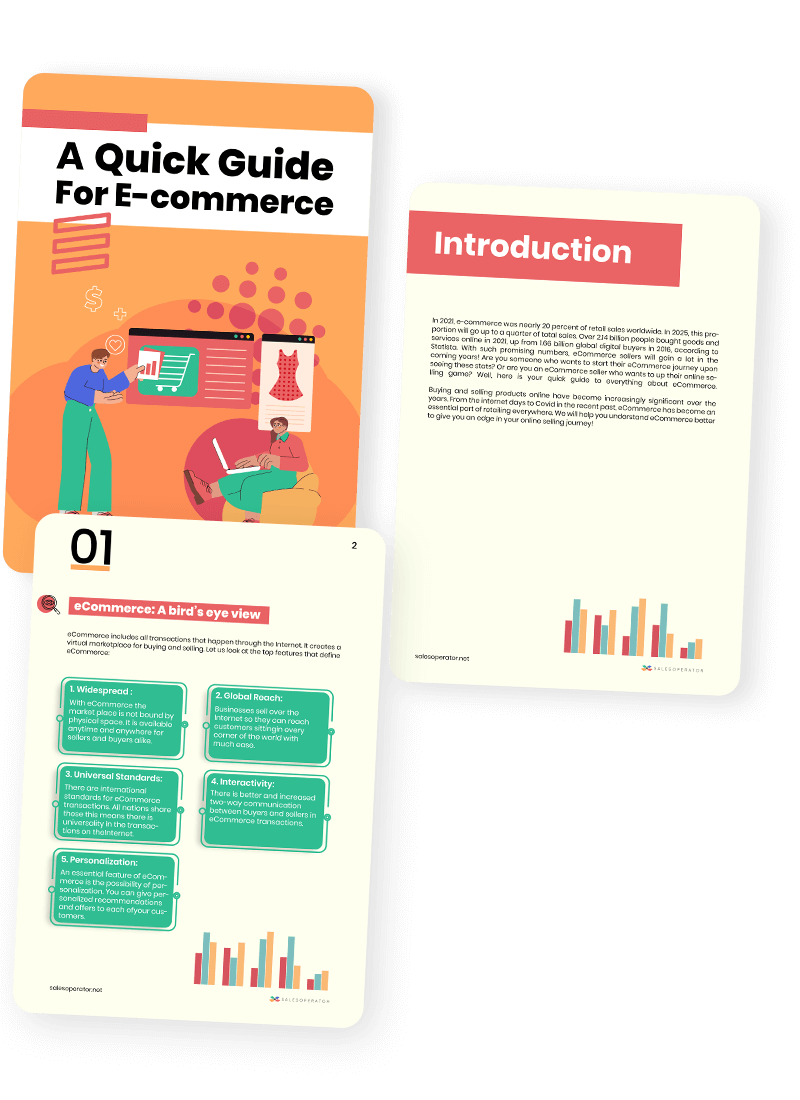Single channel selling was a common way to get by or make it as an ecommerce brand several years ago, it is not going to cut today if you have big growth ambitions. Selling on a single channel only allows you to reach a small percentage of your potential market. As the world of retailing is expanding, consumers have many more options to enjoy shopping. They can reach a brand through any channel. That’s where if you decide to stick with a single channel means you will surely lose your customers to competitors. In addition, multichannel ecommerce can help you tap into larger audiences and win new customers, giving you a chance to expand your business.
In this post, we are going to discuss in detail about when you should consider going for multichannel approach, why your store should consider it, and more importantly, how to develop a right multichannel ecommerce strategy.
What is multichannel ecommerce?
As the name suggests, multichannel ecommerce is a strategy that involves using multiple sales channels and platforms to reach customers and sell more products.
Offering products on several different sales channels makes it more convenient for customers to purchase products through the channel of their choice.
For example, you can use multiple channels like Amazon Marketplaces, eBay, social media, your own website/app, or Etsy for selling your products.
Benefits of a multichannel ecommerce approach
When you’re ready to make the leap from single channel sales to multichannel fulfillment, it can feel like a long and winding road. But when a business is ready for this bright new future, it often means you ready for more formal strategies that can save time, effort, and money in the long run. Furthermore, having a presence on multiple platforms diversifies your sales channels and also reduces the risks associated with a specific channel.
Here are some of the major advantages of multichannel ecommerce:
- Increased sales and revenue potential
Multichannel ecommerce allows you to reach an audience that would not otherwise be able to reach your products. This can lead to increased sales and revenue potential.
- Improved customer reach and engagement
Multichannel online retailing allows customers to find what they want faster than ever before — especially if they have a preference for one particular channel over others. Having a wide range of options make it easier for customers to make purchases and engage with your brand consistently across multiple channels. It also results in increased brand recognition that ultimately leads to higher customer engagement rate.
- Enhanced brand presence and recognition
Getting your business in front of more people at multiple platforms is essential for growing your brand. Besides getting exposure, it can also help build your brand credibility — that is, the more people see your company around, the more it starts to differentiate itself from a sea of competitors, resulting in enhanced brand authority.
How to determine if a multichannel approach is right for your store
The question arises when you should adopt a multichannel approach for your store. Understanding the following three points can help.
- Assessing your current e-commerce channels and sales performance
The first step in determining if a multichannel approach is right for your store is to assess its current sales performance. You can start by looking at the data from each existing channel, including total revenue, conversion rates and Average Order Value (AOV) from each existing channel. It gives you an idea of how well each channel is performing and where you could improve. It is also important to look at the performance of individual products within channels, as it will reveal many interesting insights about your business.
- Identifying gaps in your customer reach and areas for improvement
In simple words, gap analysis is a process that helps you to identify where the business is today, and where it needs to be in the future, and what is required to reach where you want your business to be. It helps you figure out what is needed to close the gap and accordingly you can prioritize your resources appropriately.
The gap analysis needs to be done on multiple factors that include: sales numbers, customer reviews, average order value, and shipping times.
- Evaluating the resources and capabilities required for a multichannel approach
Once you are done with the gap analysis step, your next step should be evaluating necessary solutions to determine which one will work the best for your business. You need to evaluate each of them based on their cost, time required, and potential benefits.
As complexities of managing product listings of a large number of products accurately on multiple channels, managing orders on multiple accounts, updating and managing product stocks accurately on various channels in real-time accurately, ensuring data consistency, minimizing errors, managing invoicing and taking care of shipping can be overwhelming to manage manually, the probability of making mistakes also increases.
These are all tasks you need to do on a daily basis, per each channel you cover. As they are not connected, you will have to manually synchronize what is happening and merge it into a combined view.
Switching between applications and manually merging data can, in my experience, prove stressful and challenging.
Keeping on top of the business developments, as well as having concise data is a big obstacle that you will have to consider and to tackle.
The best way to approach this problem is to make a list of tasks where you face challenges and take corrective steps to optimize the process. Using a multichannel ecommerce software can simplify the overall process. You can access various data to know how various products are performing on respective channels.
Once you gain a high-level overview of your business, dig deeper the four critical components: Listing, Order & Inventory, and Shipping to understand what are the existing bottlenecks and how you can improve on various parameters.
Developing a multichannel ecommerce strategy
Multichannel marketing lets you reach your customers across multiple channels and engage them with your best content more easily.But you need to put a proper plan to leverage its advantage. Following a step by step plan can be crucial for long term success.
- Identifying right channels
The first and most critical step of your multichannel selling journey is choosing the most suitable channel to expand your business. There are obvious reasons why marketplaces are the go-to choices for brands to take their first steps in multichannel retail. Successful multichannel retailers only sell in sales channels that make sense for their customers and their business; selling on irrelevant channels can do more harm than good as you end up wasting your precious time, energy, and money.
Every marketing channel (or brand) has its strengths and weaknesses, but it’s possible to use a multichannel marketing approach to take advantage of each channel’s core strengths while mitigating its weaknesses.Therefore, it makes sense to carefully identify the channels that have the maximum potential for long-term profitability and which of the channels are more suitable for certain product type as not all products perform well on all channels.
For example, if you’re selling handmade designer products, Etsy can be a good choice, but it doesn’t work well for all products. Same is the case with eBay, Amazon and any other online marketplaces.
- Integrating your channels and creating a consistent brand experience
The integration part is vital for running the multichannel ecommerce business smoothly. A major advantage of integrating all channels on a single platform is it helps maintain consistent and uniform brand experience across all channels effortlessly. Furthermore, the following two reasons state why multichannel ecommerce integration is important:
- Making it easy to track and monitor listing, order, inventory and shipping
Managing multiple ecommerce channels can be easier said than done. Right from product listing, image uploading, updating inventory & orders to managing shipping, all of these tasks are time and resource consuming, especially when you have to track and monitor these things in real-time on multiple channels. Your approach should be to integrate all sources of data from various channels at a single place as it can simplify these tasks.
- Improving Reach & Conversion Rate
Multichannel ecommerce integration improves reach, as you can now reach more customers through all channels by using a single login or app. When you have a seamless experience across different devices and channels, it gives you the opportunity to convert more customers.
- Developing a plan for managing and maintaining your multichannel approach
You cannot just start selling on multiple platforms without considering the fact that how you will take care of product listing, order fulfilment, shipping etc. Without a plan, the enormity of the task will soon overwhelm you.
The following tips can be helpful:
- Spend some time to understand your buyers on each channel. Buyers’ behaviour on different channel may vary and the strategy which works well on Amazon may not work for eBay, Walmart or other marketplaces.
- Optimize your content for different channels as per the requirement of context
- Make a thorough plan how you are going to track key parameters, such as listing, Orders, Inventory, and Shipping on multiple channels.
- Identify areas where improvements are required
- Take corrective steps to fill those gaps. .
Final Words
On a final note, multichannel ecommerce is the way to go if you want to survive and thrive in the highly competitive online retailing space. However, it is important to carefully consider various aspects pertaining to multichannel retailing and then developing right strategies which are perfectly aligned to your multichannel ecommerce needs.




